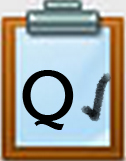Q3. Speaking Out About Global Issues: Project Prep
Project Preparation ~ Outlining & Scripting
Step 1. Do your research and take lots of notes. You will find using a graphic organizer, word processing document, or slide presentation program (Google slides or Microsoft PowerPoint) will be helpful.
- Find out more about the issue you are exploring on the Goal page for the item you selected.
- Review some facts and figures
- Read through the goal targets, and take some notes for your video. Also look at the Global Goals Posters to get a quick “snapshot” view of your issue.
- If you are working cooperatively with a partner or small group, make sure you do not repeat your partner’s information by sharing and communicating often as you do your research.
- When you are introducing the issue, your goal is to explain the problem to your audience.
- When you are explaining why it matters, you should be using some facts and figures from these websites to help your audience understand the scope of the problem and possibly sharing what work needs to be done on the issue.
Step 2. Create a storyboard or an outline andwrite a short script to prepare for your presentation. If working with others be sure to identify who do each part.
- The sentence starters on the Speaking Skills Checklist may help you organize your thoughts.
- Each of your parts in the video should be a minute or less in length, so edit it carefully and practice several times until it flows well with a total time under two minutes.
- The total length of your video should be under two minutes, with a target goal of about a minute and a half total to keep the attention of your audience.
- Your script should include: introducing yourself (first name only) before beginning your narration. Your teacher will review your script before you move to the practice stage. Practice it several times until you and your partner can present it,
- Ask your teacher to review it when you feel you are done, and before making your video.
Step 3. Use your notes to write a short script to explain what you are going to say in your video. The sentence starters on the Speaking Skills Checklist may help you organize your thoughts.
Competencies & Standards
MITECS Michigan Integrated Technology Competencies for Students, and
1. Empowered Learner
c. Use technology to seek feedback that informs and improves their practice and to demonstrate their learning in a variety of ways
2. Digital Citizen
a. Cultivate and manage their digital identity and reputation and are aware of the permanence of their actions in the digital world
b. Engage in positive, safe, legal and ethical behavior when using technology, including social interactions online or when using networked devices
3. Knowledge Constructor
a. Plan and employ effective research strategies to locate information and other resources for their intellectual or creative pursuits
b. Evaluate the accuracy, perspective, credibility and relevance of information, media, data or other resources
c. Curate information from digital resources using a variety of tools and methods to create collections of artifacts or solving authentic problems
d. Build knowledge by actively exploring real-world issues and problems, developing ideas and theories and pursuing answers and solutions
6. Creative Communicator
d. Publish or present content that customizes the message and medium for their intended audiences
7. Global Collaborator
b. Use collaborative technologies to work with others, including peers, experts or community members, to examine issues and problems from multiple viewpoints
Websites and Documents
Websites
- 17 Sustainable Development Goals of the U.N.
- Adobe Creative Cloud for Students
- Educreations
- Global Goals Posters
- Screenpal (formerly Screencast-O-matic)
- Splice
- WeVideo
- World's Largest Lesson! Unicef-Unesco
Videos from Outside Sources
- Sustainable Development Goals Video
- World's Largest Lesson pt 2 Video at the top of the page
21t4s Websites
21t4s Documents & Quizzes




